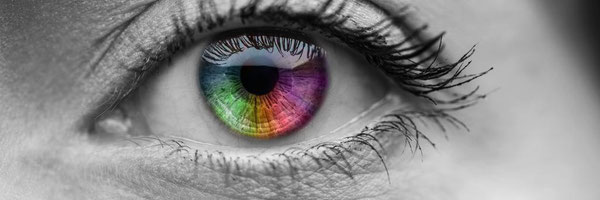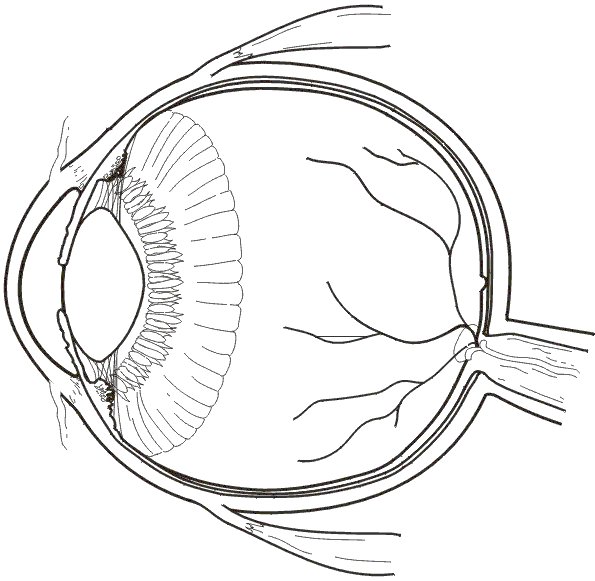How Humans And Animals See The World
Grade 6
Presentation
No video provided
Problem
What is My Topic About?:
- My topic is about the human eye and how it works and how even a little problem like a damaged cone cell can impact how you see colours around you.
- Some people can see more colours than others which is caused by a extra cone cell in your eye.
- I'm passionate about this project because I think it is important to know about your eyes and know about the colours we see around each other because we see them everyday so I think it is important to know about them more.
- My topic is also important because colour impacts your life more than you think and it also helps to remember things and memories.
- In conclusion I chose this topic because of what I experience everyday and it is a very interesting topic that goes very deep.
Why Does It Matter?:
- My CYSF project matters because I think it is important to know what we see everyday and why it will impact us if it were gone.
- My CYSF project is also important because if we had a damaged cone in our eyes (which would impact what colours you see) it would effect how our brain thinks which will impact our lives a lot. Imagine walking up to your friend, the first thing you notice is how they look which comes from our sight, without our sight we would be able to judge that much.
- The main reason our eye may not be able to see is due clouding in your eye’s lens which would cause blindness in the eye, but blind people’s eyes aren't their number one sense because they don’t have that sense so another sense would be there number one sense.
Aims & Objectives:
- This project aims to tell the world how the human eye works and why do we need to know more about it.
- This project also aims to words helping people to know how animals see the world because that will affect how we treat them.
- We need to understand how the human eye works because ehow will we notice if someone is blind, in my project it shows how to notice if someone is blind. (Without them wearing dark glasses to tell)
- Isn't it important to know about your body? Yes, it is so that's another reason why the world needs to know about your eyes, animal eyes, and insects eyes.
- In conclusion our eyes are an important factor of our human body that we have to know about but that doesn't mean to not know about other animal/insects eyes as well.
Method
Research
1. Why do humans see the world differently than animals and insects?
Humans have 3 different types of cone cells that see/detect different colours which are called visible light waves. We see light that enters the eye directly or has been reflected off a surface of a object / thing and then enters the eye. If there is a red chair the reason why its red is because it absorbs all wavelengths of light except red same for other colours too. Black and white are different because black absorbs all wavelengths of light while white absorbs none, insead white refects all wavelengths of light back into the retina. Spiders and many other insects can see a type of light called “ultraviolet” that most humans cannot see. Other reptiles like snakes can see infrared light which helps them see prey movement through heat. Infrared light is known as “heat radiation” (some animals can see heat differently than humans.)
Credit:
- Colors Animals See | Ask A Biologist --> 9th Paragraph --> Author: CJ Kazilek & Kim Cooper --> Date: Dec. 17, 2009
- How The Eyes Work | National Eye Institute --> 3th Paragraph --> Author: unknown --> Last updated: April 20, 2022
- What are the limits of human vision?- BBC Future --> 5th Paragraph --> Author: Adam Hadhazy --> Date: July 27th, 2015
2. What are the true primary colours?
To know what the true primary colours are, we need to know what a primary colour is. Primary colours are the foundation for creating all the other colours in the visible spectrum. Our primary colours are red, yellow and blue but in the physics of light your primary colours are red, green and blue. The confusing part is that there are two different colour theories; coloured light and “material colours” (the colours you see on a colour wheel or paint) These two theories are known as Additive and Subtractive colour systems.
The Additive Colour System:
A simple way to think about additive light is to imagine three flashlights projecting individual circles of light onto a wall. The shared intersection of two flashlight circles will make the pigment brighter every time you mix them. With each mix, the flashlight add lightness, therefore we call this kind of mixture additive light. Thats why every time you shine a flash light towards a triangular prism a rainbow comes out on the other side. (white absorbs all light wavelengths so white light is basically a rainbow because combined) The more times you mix the lighter the pigment becomes.
The Subtractive Colour System:
This is when we mix together inks or paints. A piece of white paper, reflects all visible wavelengths. When yellow ink is added to the paper, the paper doesn’t absorb the yellow wavelengths, now the yellow wavelength is being reflected back into the retina. This results in the perception of yellow because the paper now reflects the remaining non-absorbed wavelengths. In subtractive colour mixing, you start with all the wavelengths (white) and you subtract specific wavelengths as primaries are added.
Credit:
How Impossible Colors (Like Stygian Blue) Work | HowStuffWorks
Is Magenta A Colour?
Magenta is the colour that is a mix of red and purple. On the colour wheel the colours blend well together like yellow and orange or blue and purple. Magenta is visible on the colour wheel but not in the wavelengths of light.
Why is magenta visible on the colour wheel but not in the wavelengths?
All visible colours on the spectrum of light have different wavelengths to distinguish them from the other colours on the colour wheel. Magenta doesn't exist on the light spectrum, so magenta doesn't have a wavelength.This colour is something our brain creates to fill in space thats makes sense. Mostly, when your brain is trying to process a colour, your brain tries to simply it. When you mix red and green light you end up with yellow light because your brain have “averaged” it. When you mix purple and red light you end up with green light. Imagine green in between red and purple in the colour wheel, your brain wants that outcome to make logical sense so instead of putting green there your brain mixes red and purple to make magenta.
Credit:
Magenta: The Color That Doesn’t Exist And Why | by Amelia Settembre | The Startup | Medium
- Published on: February 26, 2020
Magenta Doesn’t Exist? – Arts on the Brain
- Published on: December 2, 2020
Magenta: The Color That Doesn't Exist | BBC | Video
How Does The Iris have Colour?
Your eye colour is determined by how much melanin you have in your body. Melanin is what makes our skin, hair, or eyes the colour they are. For example people with brown eyes have a large amount of melanin in the iris, while those with blue eyes have much less pigment. Our eye colour comes from genetic traits from your parents to the child, the parents genetics determines how much pigment or melanin in the iris.
Chart:
Your Blue Eyes Aren’t Really Blue - American Academy of Ophthalmology
Eye Colors: Rarest Eye Color, Baby Eye Color, Heterochromia
Do Colours Exist In The Real World? What's The True Colour Of The World
Data
|
Animal: |
Eye: |
How Animals See Colour: |
How Humans See colour: |
|
Dog |
Dogs have only two cone cells. Their cone cells are made for picking up yellow and blue-to-ultraviolet light.
|
Humans cannot see ultraviolet light so thats why some parts appear gray. |
Humans have red, blue, and green cone cells so any light that contains these colours we can see them. (For example most colour blind people have a damaged cone cell so if my red cone cell is damaged I can’t see any colour that has red in it normally.) |
|
Gecko |
Geckos excellent colour vision at night. Their eyes have evolved to be up to 350 times more sensitive to colour at night than ours. |
|
|
|
Garden snail |
The eye can't focus or see colour, they would just about be able to make out this other snail moving past, or a predator approaching. |
|
|
|
Giant Clam |
Giant clams are sensitive to three different colours of light, they are unable to combine the information - instead, they see colorful but undefined images. |
Adult clams see the world through several hundred tiny pinhole eyes along the edge of their soft bodies. (pinhole eyes are the shape of a deep cup and have a narrow opening, but no lens.) |
|
|
Jumping Spider |
Jumping spiders can see a broader spectrum of colours than we can. They even have pigments sensitive to ultraviolet light, so they are able to see more details in this flower's petals than we can.
|
|
|
How do other animals see the world? | Natural History Museum
Conclusion
In conclusion Humans and animals/insects don't see colours in the same way. Animals and Humans don't see colours in the same way because our cone photoreceptors are different. (cones help us see colour) Animals and Humans Don't have the same vision, they don't see colour in the same way and if a cone cell is damaged or not functioning properly then that can cause you to see colours differently. (if my red cone cell is damaged then I can't see any wavelength (colour) that has red in it) Last some reptiles can see infrared light which means they can see heat in a way humans cannot.
Citations
1. Why do Humans See The World Differently ?
- Colors Animals See | Ask A Biologist --> 9th Paragraph --> Author: CJ Kazilek & Kim Cooper --> Date: Dec. 17, 2009
- How The Eyes Work | National Eye Institute --> 3th Paragraph --> Author: unknown --> Last updated: April 20, 2022
- What are the limits of human vision?- BBC Future --> 5th Paragraph --> Author: Adam Hadhazy --> Date: July 27th, 2015
2. What are The True Primary Colours?
How Impossible Colors (Like Stygian Blue) Work | HowStuffWorks
3. Is Magenta A Colour?
Magenta: The Color That Doesn’t Exist And Why | by Amelia Settembre | The Startup | Medium
- Published on: February 26, 2020
Magenta Doesn’t Exist? – Arts on the Brain
- Published on: December 2, 2020
Magenta: The Color That Doesn't Exist | BBC | Video
Acknowledgement
I would like to acknowledge my teacher, Mrs.Easton for helping me all the way through this project.


